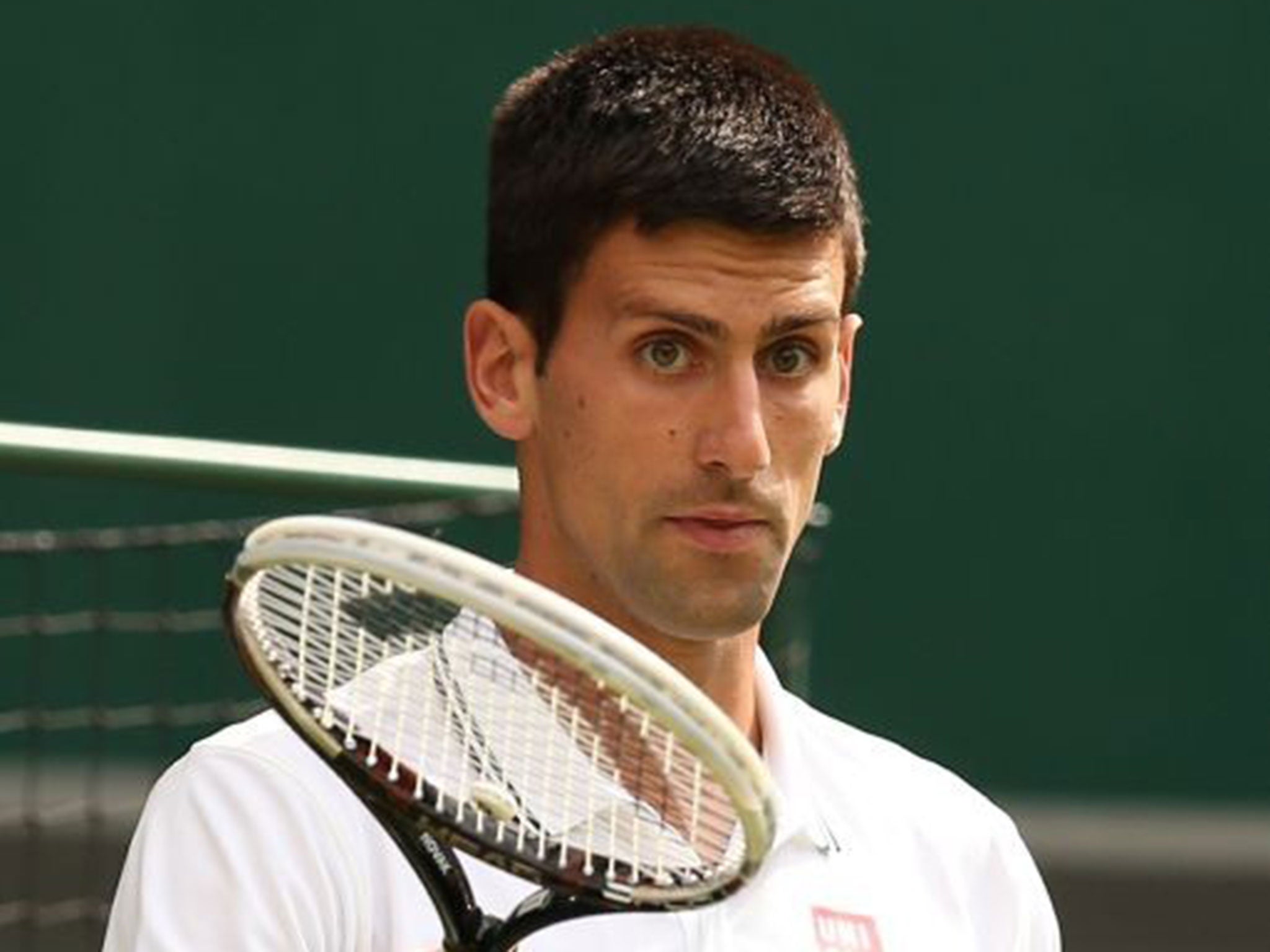Novak Djokovic says tennis lacks 'personalities' - so what happened to the great entertainers?
The world number two was commenting on the on-court antics of his opponent Radek Stepanek, as well as those of eccentric Frenchman Gaël Monfils

At a crucial moment of his match against Novak Djokovic at Wimbledon this week, a crisp passing shot whizzed past Radek Stepanek and clipped the line. The 35-year-old Czech threw his arms in the air to challenge the call, before theatrically falling to his knees and clasping his hands together in prayer as he willed the ball to be called out, to the delight of the increasingly tipsy Centre Court crowd.
Djokovic glared at his opponent's prostrate form as Hawk Eye gave its verdict: IN. Stepanek groaned audibly; Djokovic merely stalked away. For the remainder of the game, the Czech continued to play the crowd, frequently delaying his challenges to line calls until the last moment for dramatic effect and at one point leaping clear over the net. In the end, the crowd roared louder for him than it did for Djokovic, the victor.
After the match, the world number two was asked what he thought about the on-court antics of his opponent, as well as those of Gaël Monfils, the eccentric but fantastically entertaining Frenchman who yesterday narrowly lost to another Czech, Jiri Vesely.
Did he think there was a line that players should not cross when it came to crowd-pleasing? His answer was surprising.
"I understand that everybody's trying to do something to feel comfortable on the court to win the match," he replied. "For somebody it's better to stay focused, not talk, not show emotions – that's fine. But somebody likes to, as Gaël, to entertain, to get interaction with the crowd, with his team, which is absolutely fine.
"I mean, I think that tennis is lacking a little bit of personalities, to be honest," he added. "Because of the amount of tournaments we play, of course importance in the value of each match, you put your game face on when you're on the court. You want to win.
"On the other hand, it's sport. People come to support the tennis, you as a player, but also they would like to see a little bit of your personality. I think that's absolutely fine by me. It's not something that I think has a negative impact on tennis."
Some would argue that a plea from Djokovic for tennis players to wear their hearts on their sleeves is a bit rich. Although he has a reputation for being a joker off the court, where he is renowned for his comical impressions of other players, when he steps out in front of the crowd he is stony-faced. Perhaps this is why spectators tend not to warm to him as much as they do to the likes of Roger Federer or Rafael Nadal.
The era of the "game face" has been ushered in by the demands of the modern game, with its emphasis on superhuman levels of fitness, sport psychology and finely tuned nutrition. But has it come at a cost?
Yes, according to former Wimbledon champion Virginia Wade, who in 2012 lamented the lack of vibrant personalities in the women's game, describing the best players as "racquet-wielding robots". She said the game had become more dull since the Williams sisters raised the bar for power, adding: "Every calorie and hour is mapped out by their teams, leaving little room for the player's individuality to surface."
Men's tennis has seen many a showman in the past, from the famous rages and racket abuse of John McEnroe to the on-court charisma of Ilie Nastase, Jimmy Connors, Henri Leconte and Goran Ivanisevic. But it would be unfair to say that the modern game is devoid of characters.
Take Monfils, 27, an R&B-loving Parisian whose nickname is "La Monf", who entertained crowds at last month's French Open by taking part in a dance-off with his compatriot Laurent Lokoki. Earlier this week at Wimbledon, Monfils was questioned about his on-court antics against Tunisia's Malek Jaziri, which saw him being scolded by the umpire for repeatedly complaining about an injury. After the match (which he won) he suggested that his ebullient performance had helped him to victory.
"I will say [I'm] a normal player, I think every coach will tell you that you should focus on your game, not on the opponent," he said. "So if the guy looks at me, yeah, it can be a little bit tricky for him… but for me, I don't care. You know, if the guy is talking to anyone, it's fine. If he can talk to me, it's even better."
Some players keep their game faces on when they leave the court. When she was asked what she made of Djokovic's comments at her post-match press conference yesterday, a tired and irritable Serena Williams replied: "I just think the longer these interviews go… I mean, maybe that's why at Wimbledon they have them long, because you get to see more of a person's personality, like the realness starts creeping in… Is this the last question?"
Perhaps this is the best explanation as to why today's top players feel the need to put on inscrutable game faces when they leave the locker room. In an era when their every move can be paused, rewound, questioned and picked apart by the media and armchair analysts as much as it can by their opponents, it is the last defensive shot they have.
Subscribe to Independent Premium to bookmark this article
Want to bookmark your favourite articles and stories to read or reference later? Start your Independent Premium subscription today.

Join our commenting forum
Join thought-provoking conversations, follow other Independent readers and see their replies